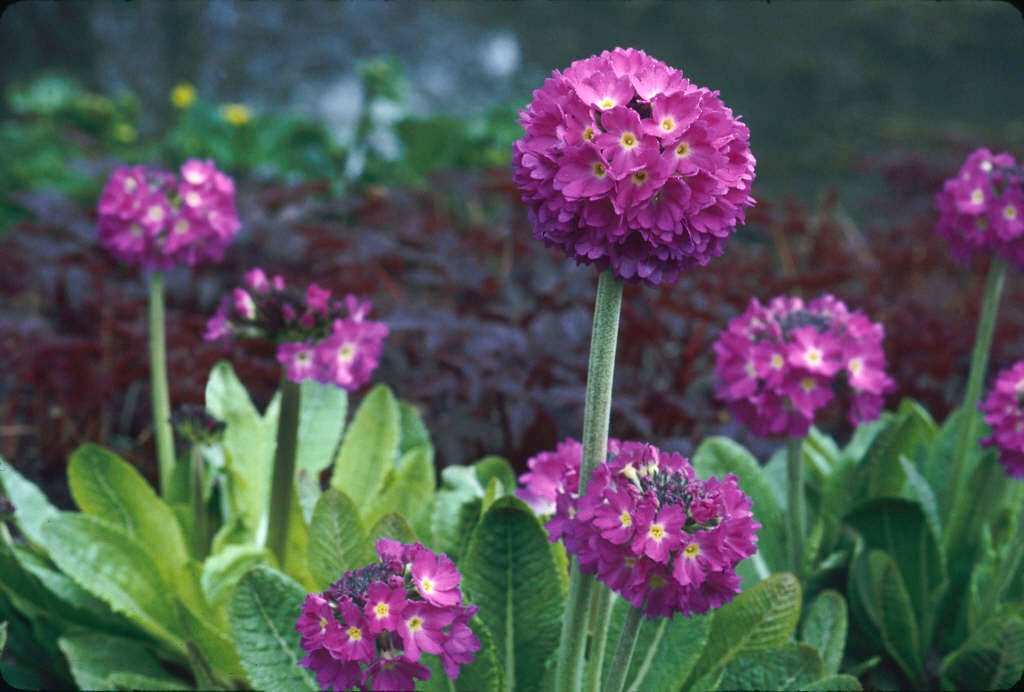Primula denticulata (De)
drumstick primula
An herbaceous perennial to 30cm, with green obovate leaves with a mealy coating beneath. Upright stems produce dense, rounded pom-pom like heads of pink, purple or white flowers with a yellow eye, from early spring through to summer
Size
Ultimate height
0.1–0.5 metresTime to ultimate height
2–5 yearsUltimate spread
0.1–0.5 metresGrowing conditions
Moisture
Moist but well–drained, Poorly–drained, Well–drainedpH
Acid, NeutralColour & scent
| Stem | Flower | Foliage | Fruit | |
| Spring | Purple White Pink | Green | ||
|---|---|---|---|---|
| Summer | Purple White Pink | Green | ||
| Autumn | ||||
| Winter |
Position
- Full sun
- Partial shade
Aspect
North–facing or West–facing or South–facing or East–facing
Exposure
Exposed or Sheltered Hardiness
H6Botanical details
- Family
- Primulaceae
- Native to GB / Ireland
- No
- Foliage
- Deciduous
- Habit
- Columnar upright
- Genus
Primula are herbaceous or semi-evergreen perennials, forming a basal rosette of simple leaves, with salver-shaped or bell-shaped flowers which may be solitary or carried in an umbel or in whorls on an erect stem
- Name status
Correct
- Horticultural Group
- Denticulatae primulas have upright, toothed leaves and drumstick-shaped flowers on tall, slender stems which are most commonly purple, but also come in shades of white, blue, pink or red
- Plant range
- Asia
How to grow
Cultivation
Grow in deep moist or moist but well-drained neutral to acid, humus-rich soil in full sun or partial shade
Propagation
Propagate by division in early spring or propagate by seed sown from autumn to spring
Suggested planting locations and garden types
- Rock garden
- Cottage and informal garden
- Flower borders and beds
Pruning
Cut back after flowering
Pests
May be susceptible to aphids, vine weevil, slugs, leaf and bud eelworms and glasshouse red spider mite
Diseases
Generally disease-free
Get involved
The Royal Horticultural Society is the UK’s leading gardening charity. We aim to enrich everyone’s life through plants, and make the UK a greener and more beautiful place.
